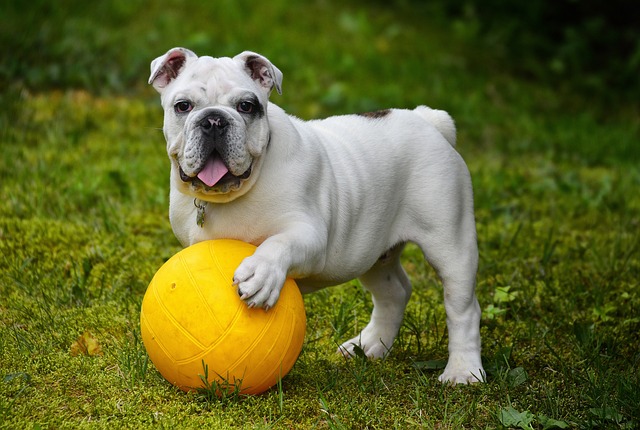
Are Pomeranians hard to potty train?
Pomeranians are tiny balls of energy with big personalities—but that spunk can make potty training feel like a challenge.
Going for a walk with a lively Labrador Retriever should ideally be a relaxing and enjoyable time. However, many owners have encountered this problem: once their Labrador steps outdoors, it behaves like a wild horse that has broken free from its reins, desperately pulling on the leash, leaving the owner in an embarrassing situation. This not only spoils the pleasant atmosphere of the walk but also, over time, may pose potential risks to the dog's health, causing the owner a great deal of worry.
Labrador Retrievers are full of energy and have a strong sense of curiosity. The outside world is full of novel temptations for them. The aroma of food wafting from the street, small animals running in the distance, or the swaying flowers and plants in the wind can instantly ignite their enthusiasm for exploration, which turns into a strong pulling force at the other end of the leash. When the dog spots something it likes, its excitement is like a surging tide, and it rushes forward recklessly, eagerly looking forward to getting closer quickly. At this moment, the leash in the owner's hand is like a tightly stretched string that might snap at any moment, and the owner can only struggle to "carry the load" behind. Looking at the dog's eager back, the owner can't bear to scold it severely but desperately hopes that it can walk beside them calmly.
From a professional behavioral perspective, the dog's pulling on the leash is largely due to a lack of training. In the dog's perception, pulling the leash in the past has allowed it to quickly reach the place it wants to go. Over time, this has become an ingrained behavior. Moreover, the owner's reaction also plays a crucial role. Some owners instinctively pull back hard when the dog pulls, which, in the dog's eyes, may turn into an interesting "tug-of-war game," instead inspiring them to pull even harder and falling into a vicious cycle.
 So, how exactly can we get the Labrador to break the habit of pulling? Establishing a clear system of commands is a key step. In daily interactions, the owner should use simple and fixed commands, such as "Stay close" and "Stop," and pair them with corresponding actions to let the dog understand the owner's intentions. When the dog follows the command and behaves correctly, for example, when it stops pulling wildly and stands still after hearing the command "Stop," the owner should immediately give a reward. A delicious treat, a gentle stroke, or a few words of enthusiastic praise can all let the dog know that following the owner's instructions will bring good rewards, making it more willing to cooperate. Every time the dog successfully responds to the command, a sense of relief wells up in the owner's heart, as if seeing the dawn of the dog's growth.
So, how exactly can we get the Labrador to break the habit of pulling? Establishing a clear system of commands is a key step. In daily interactions, the owner should use simple and fixed commands, such as "Stay close" and "Stop," and pair them with corresponding actions to let the dog understand the owner's intentions. When the dog follows the command and behaves correctly, for example, when it stops pulling wildly and stands still after hearing the command "Stop," the owner should immediately give a reward. A delicious treat, a gentle stroke, or a few words of enthusiastic praise can all let the dog know that following the owner's instructions will bring good rewards, making it more willing to cooperate. Every time the dog successfully responds to the command, a sense of relief wells up in the owner's heart, as if seeing the dawn of the dog's growth.
Choosing the right harness can also help with the training. A chest harness available on the market is a good choice. It can evenly distribute the pulling force, reducing the burden on the dog's neck and, at the same time, giving the owner more control. When the owner puts a brand-new harness on the dog, there is full of anticipation in their heart, hoping that it will become a powerful assistant in correcting the dog's behavior and making the walk harmonious again.
During the walk, when the dog pulls, the owner should not rush to fight back. Instead, they can try changing the walking direction. If the dog rushes to the left, the owner suddenly turns right. This unexpected move will make the dog feel confused for a moment, stop pulling, and refocus its attention on the owner. After repeated training like this, the dog will gradually understand that only by keeping up with the owner's pace can it enjoy a pleasant walk. During the implementation process, the owner needs to be very patient. Every time the dog stops pulling, it is a small victory in the training and is worth remembering.
In addition, releasing the dog's excess energy can significantly improve the pulling behavior. Labrador Retrievers are full of vitality. If their physical strength is not fully exhausted before the walk, they will naturally be restless after going out. The owner might as well play games like fetching a frisbee or throwing a ball with the dog before going out, allowing it to run freely and release its energy. Watching the dog have a great time in the game, the owner is also filled with joy and, at the same time, prepares for a peaceful walk later.
Getting the Labrador to stop pulling on the leash is not something that can be achieved overnight. It requires the owner to invest a great deal of time and patience. Every training session is an opportunity for communication with the dog's heart. By understanding the motivation behind the dog's behavior and guiding it in a scientific and loving way, we can not only correct the dog's bad habits but also deepen the emotional bond between us. Accompanying the dog's growth with love and wisdom, we look forward to every walk becoming a warm and beautiful memory.

Pomeranians are tiny balls of energy with big personalities—but that spunk can make potty training feel like a challenge.

Finding that your newly adopted adult dog has had an accident indoors can be disappointing, but remember

Corgis are little balls of energy—their short legs and perky tails make them eager to explore every corner, which can make staying still feel like a chore.

Teddy Dogs (often called Shichon or Zuchon mixes) are smart, but their small size means they have smaller bladders—so consistency is key when teaching them a designated toilet spot.

Training a Belgian Malinois to use a designated toilet spot can feel daunting at first—these sharp, active dogs thrive on structure, but they also need clear guidance to learn new habits.

Chihuahuas’ tiny size makes toilet training feel tricky—their small bladders mean they need frequent trips outside, but consistency is key to helping them learn.